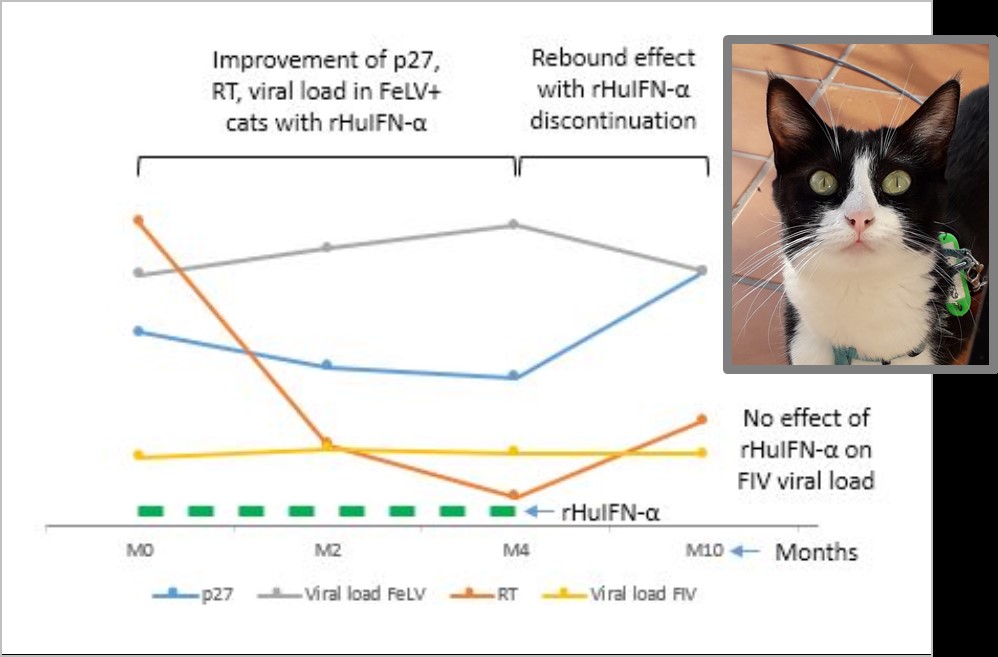Gomez-Lucia, E., Collado, V.M., Miró, G., Martín, S., Benítez, L., Doménech, A.
Follow-Up of Viral Parameters in FeLV- or FIV-Naturally Infected Cats Treated Orally with Low Doses of Human Interferon Alpha
Viruses. 2019 Sep 11;11(9). pii: E845
DOI: DOI: 10.1016/j.ejsobi.2019.103114
RESUMEN
Specific treatments for the long-life infections by feline leukemia virus (FeLV) and feline immunodeficiency virus (FIV) are either toxic, expensive or not too effective. Interferon α (IFN-α) is an immunomodulatory molecule which has been shown in vitro to decrease the release of infective particles. The aim of this study was to follow the progress of the clinical score and viral parameters of FeLV- and FIV-naturally infected privately owned cats treated with recombinant human IFN-α (rHuIFN-α, Roferon-A). Twenty-seven FeLV-infected cats (FeLV+) and 31 FIV-infected cats (FIV+) were enrolled in the study. Owners were instructed to orally administer 1 mL/day of 60 IU rHuIFN-α/mL in alternating weeks for four months. Blood samples were taken at the beginning of the study (M0), mid-treatment (M2), end of treatment (M4), and 6-10 months later (M10). Clinical status at these time points improved notably with rHuIFN-α treatment, regardless of the initial severity of the disease, an effect which lasted throughout the study in most animals (15 of the 16 FeLV+ symptomatic cats; 20 of the 22 FIV+ symptomatic cats) improved markedly their clinical situation. In FeLV+ cats plasma antigenemia (p27CA), reverse transcriptase (RT) activity, and proviral load decreased at M2 and M4 but increased again at M10 ("rebound effect"). The level of antigenemia or RT activity was below the detection limits in FIV+ cats, and the effect on proviral load was less marked than in FeLV+ cats. Taken together, these results indicate that rHuIFN-α is a good candidate for treating FeLV+ cats, but the "rebound effect" seen when treatment was discontinued suggests that additional studies should be conducted to clarify its effect on progression of the infection in cats.
